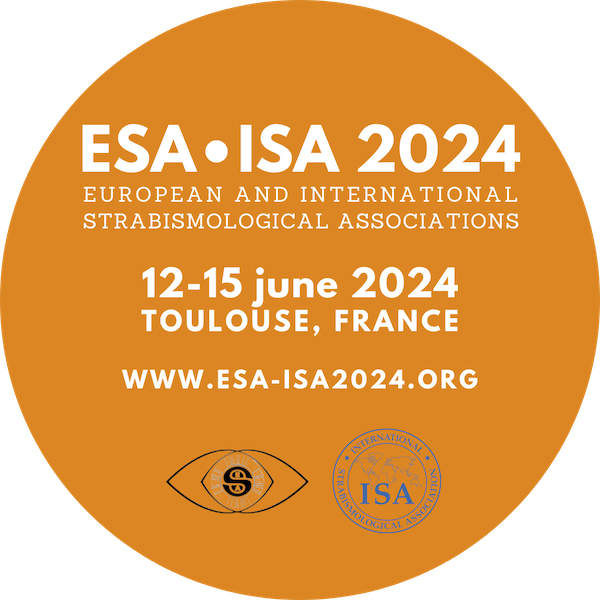
Session: Free papers Session III - Incomitant Strabismus
Strabismus surgery in Moebius syndrome
Introduction
Moebius syndrome is characterised by the association of bilateral facial palsy and horizontal gaze palsy, resulting from a congenital dysfunction of both VI and VII nuclei, often associated with other malformations. Convergence is typically preserved. Many patients also present strabismus, which have been the topic of only few studies. We report a series of patients followed for Moebius syndrome and report the clinical and surgical characteristics of their strabismus.
Methods
All files of patients diagnosed with Moebius syndrome and followed at the multidisciplinary Moebius clinic of our institution between 01/01/2018 and 01/11/2023 were retrieved and retrospectively included. The presence and characteristics of a strabismus / a surgery, post-operative status, were studied. Considering the presence of a gaze palsy, cover test measurements were not possible; all measurements were realised using Krimsky test and a specific photographic method (Strabocheck°).
Results
65 patients, aged 6 months to 57 years at last examination, were included. Among them, 37 (57%) presented a strabismus: 31 (84%) esotropias, 3 (8%) hypertropias, and 3 (8%) exotropias. Eight patients, all exhibiting esotropia with abnormal retinal correspondence, were operated during this period, by one surgeon (age at surgery: 5-20 years, med=6.25).
Pre-operative angles (at distance) ranged from 25 to 55 diopters (med=35). Surgery always consisted in a recession of medial recti, which were always very tight. Cumulated recession ranged from 5 to 13mm (med=8.5 mm). Post-operative angles (at distance) ranged from 0 to 12 diopters (med=6). Median dose-response relationship was 2.85 diopters/mm of recession.
Conclusion
Surgery in Moebius syndrome is technically difficult but can achieve good outcomes. The unfolding of the sclera after the section of a tight medial rectus is often considerable. Such interventions should articulate with the other multiple interventions these patients usually undergo.